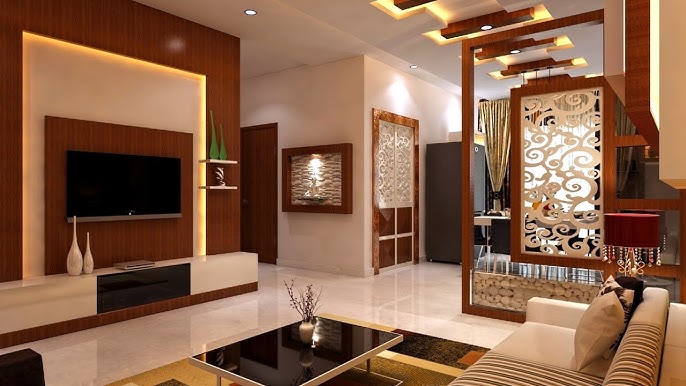Work with top miami interior design professionals for customized luxury spaces.
Work with top miami interior design professionals for customized luxury spaces.
Blog Article
Transform Your Home With Crucial Concepts of Interior Decoration and Aesthetic Appeals
By comprehending the influence of shade theory and the value of texture and patterns, one can create areas that are not only visually enticing yet likewise deeply personal. Achieving this equilibrium involves more than mere design; it incorporates a critical setup and an eager understanding of exactly how each aspect connects within a room.
Comprehending Shade Concept
Shade theory is a basic aspect of interior decoration that dramatically influences state of mind, understanding, and general visual. Recognizing the concepts of color concept allows designers to develop areas that reverberate psychologically with residents while fulfilling practical needs (miami interior design). Shades can be classified into three main kinds: main, second, and tertiary. Each classification plays a vital role in developing harmony within a space.
The psychological influence of colors is extensive; cozy colors such as reds and oranges stimulate power and warmth, while awesome tones like blues and eco-friendlies advertise calmness and serenity. The usage of complementary colors enhances aesthetic rate of interest, developing striking contrasts that can raise a space's allure.
Neutral colors, on the other hand, work as a functional backdrop, enabling other style components to radiate. It is important to think about factors such as lighting and the area's function when picking a color palette, as these can alter the perception of colors throughout the day.
Ultimately, a well-considered color design can change an area, promoting a sense of convenience and style that lines up with the occupants' preferences. Mastery of color theory is, for that reason, an essential skill for any interior developer aiming to produce unified and welcoming settings.
Attaining Equilibrium in Style
Exactly how can developers accomplish a sense of stability in their areas? Accomplishing equilibrium in design is fundamental to creating harmonious insides.
Asymmetrical equilibrium, on the various other hand, depends on varying components that still achieve a cohesive look. This strategy allows for more dynamic and casual arrangements, giving passion while maintaining stability. By meticulously choosing varying sizes, colors, and structures, designers can create a visually engaging area that feels well balanced yet energised.
Radial equilibrium emphasizes a main centerpiece with components emitting external. This design is typically seen in circular layouts, where furnishings and design produce a cohesive surround that draws the eye internal.
Ultimately, achieving equilibrium requires thoughtful consideration of scale, proportion, and the relationships between elements. miami interior design. By masterfully using these equilibrium concepts, designers can transform spaces into atmospheres that really feel both cosmetically pleasing and functionally unified, enhancing the overall experience for occupants
Importance of Spatial Recognition

A keen feeling of spatial understanding allows developers to determine focal factors within a space, leading the viewer's attention to vital features while preserving an overall feeling of unity. It additionally aids in the critical positioning of lighting, which can significantly influence the perception of room and state of mind. Furthermore, understanding spatial connections allows the designer to accommodate the specific needs of occupants, guaranteeing that each area serves its intended function without jeopardizing visual appeals.
Ultimately, spatial understanding is vital for making best use of the capacity of any type of interior space. By carefully taking into consideration the see post interaction between measurements, design, and feature, developers can create settings that not just satisfy sensible needs yet additionally stimulate a feeling of comfort and appeal, enhancing the general living experience.
Integrating Appearance and Patterns
Accepting a varied variety of structures and patterns can substantially improve the aesthetic and responsive allure of an interior room. The calculated use of different materials-- such as wood, metal, material, and rock-- develops deepness and rate of interest, making a room really feel a lot more welcoming and vibrant. For example, combining smooth surface areas with harsh structures can develop an equilibrium that attracts the eye and engages the senses.
When including patterns, take into consideration both range and repeating. Large patterns can function as focal points, while smaller sized, subtle layouts can enhance various other components without frustrating the room. Layering patterns, such as pairing floral pillows with candy striped throws, adds intricacy and a feeling of harmony if performed attentively.
It is additionally vital to maintain a natural shade palette, making sure that appearances and patterns function with each other as opposed to compete for attention. By picking have a peek here a couple of vital structures and patterns, you can produce a linked visual that mirrors your personal design while boosting the overall setting of the area. Inevitably, the careful consolidation of these elements can transform an ordinary room into an advanced environment rich with personality and warmth.
Personalizing Your Space
Creating a space that reflects your personality is crucial to achieving a truly welcoming atmosphere. Personalization in interior decoration allows you to instill your unique style and rate of interests right into your home, transforming it from a simple sanctuary into a sanctuary that talks to who you are. Begin by picking a color scheme that resonates with your emotions-- strong tones can stimulate, while soft tones supply peace.
Integrate art work and decor that show your enthusiasms, whether it be traveling, nature, or abstract concepts. Showing individual collections, such as publications, pictures, or souvenirs, can evoke treasured memories and produce focal factors within an area. Additionally, think about tailoring useful pieces, like upholstered furniture, to line up with your visual choices.

Verdict
To conclude, the improvement of a home through the important principles of interior decoration and visual appeal necessitates a comprehensive understanding of shade theory, equilibrium, spatial awareness, texture, and customization. Each element contributes substantially to producing a harmonious and practical living environment - Architecture Firm. By thoughtfully incorporating these principles, individuals can boost the visual charm and psychological resonance of their rooms, ultimately promoting a home that mirrors distinct identifications while offering convenience and practicality
Report this page